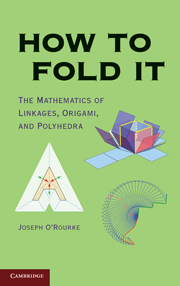1 - Robot Arms
Published online by Cambridge University Press: 05 June 2012
Summary
Robot arms, despite their sophistication as machines, are particularly simple if you think of them as linkages. The arm in Figure 1.1(a), developed by a British robotics firm, is designed to apply adhesive tape to the edges of pieces of plate glass for protection. It has a fixed base (the shoulder) to which are attached three rigid links, corresponding roughly to upper arm, lower arm, and hand, or, in the technical jargon, the end effector. The rotation settings at the motorized joints determine the exact positioning of the hand as it performs its functions. The force dynamics and engineering aspects of robot arm design are quite interesting and challenging. However, we will focus on one simple question: determining what is called the workspace of the robot – the spots in space it can reach. We will pursue this question in almost absurd generality, permitting the arm to have an arbitrarily large number of links, each of an arbitrary length.
Model. First we need to reduce a complex physical robot arm to a simple mathematical model so that it can be analyzed. Typically, the initial abstraction chosen is crude, ignoring many physical details, and then, once analyzed, gradually made more realistic and complicated.
We reduce each robot arm piece to a straight-line segment of fixed length – a rigid link of mathematically zero thickness. Each joint motor is reduced to a mathematical point of zero extension joining the two incident links that it shares.
- Type
- Chapter
- Information
- How to Fold ItThe Mathematics of Linkages, Origami, and Polyhedra, pp. 3 - 23Publisher: Cambridge University PressPrint publication year: 2011

